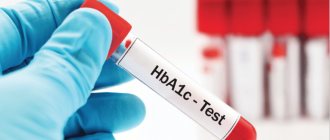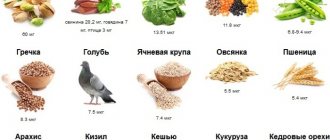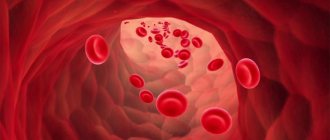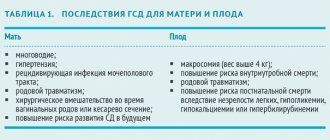Hemoglobin is a special blood protein found in red blood cells. Performs a vital function. Thanks to it, cells and tissues are saturated with oxygen, and gases and substances are exchanged in the body. Therefore, the importance of hemoglobin cannot be overestimated. If its level drops, health problems occur. This could be due to various reasons. So it is necessary to maintain a normal protein level and know ways to restore it.
Indications for the study
Hemoglobin testing is performed during a general blood test. At the same time, the quality and quantity of red blood cells are studied in parallel.
The hemoglobin level does not directly allow diagnosis. But it is assessed by doctors along with the results of other studies and clinical symptoms, as it is an important characteristic of the body’s condition.
A general blood test should be taken regularly by every person who monitors their health. This makes it possible to prematurely identify the presence of hidden diseases that have not yet begun to manifest themselves. In many cases, timely treatment leads to positive results.
Typically, a general blood test is taken once a year. During pregnancy (for prevention purposes), it is taken much more often. The study makes it possible to prevent a sharp deterioration in the condition of the expectant mother, as well as oxygen starvation of the fetus.
Blood sampling for general analysis is performed as a baseline test during hospitalization and before surgery to avoid unexpected complications. It is also important to conduct analysis to monitor the effectiveness of drug treatment.
The reason for taking a test for hemoglobin levels may also be the patient’s own complaints, for example, fatigue, increased drowsiness, etc. This may indicate not only a reduced protein level, but also the presence of serious diseases, including malignant neoplasms.
Blood test for hemoglobin
Most often, hemoglobin is determined as part of a clinical blood test. It is carried out for preventive purposes, during dispensary observation and in order to identify a number of diseases.
Hemoglobin in a general blood test (Hgb, Hb) reflects the amount of protein per unit volume. Expressed in grams per deciliter or liter (g/dl, g/l). For example, 14 g/dl, which corresponds to 140 g/l.
You need to donate blood on an empty stomach in a calm environment. Photo: repinanatoly / freepik.com
Hemoglobin norm
The amount of hemoglobin is directly related to the number of red blood cells in the blood. Red blood cell norms:
- for men 4.5-5.5*1012 / liter;
- for women – 3.7-4.6*1012/liter.
The amount of hemoglobin is:
- in men 125-145 g/l;
- in women 115-135 g/l.
In addition, there are special indicators that determine the amount of hemoglobin necessary for the normal functioning of the body. This is a “color indicator” indicating the degree of saturation of red blood cells with protein. In normal condition, it ranges from 0.8 to 1.1 units. Studies also determine the saturation of each individual red blood cell. On average, this figure should be from 28 to 32 picograms.
How to reduce hemoglobin in the blood?
If what causes hemoglobin to rise has nothing to do with serious illnesses, then you can influence it with a specific diet or medications. Among the pharmaceutical medications that can be easily purchased at the pharmacy, there are those that are aimed at thinning the blood: Trental, Cardiomagnyl, Curantil, Aspirin. Only a doctor should prescribe them! To reduce hemoglobin at home, you need to adjust your diet:
- Drink plenty of fluids per day. To do this you need to drink warm water. If you cannot do this, then saline drips are used.
- Reduce fats, sweets, eggs, as they increase cholesterol and so in a viscous environment.
- You should not take multivitamins or products that contain copper and iron.
- It is better to choose shrimp, fish, white meat, nuts, legumes, and vegetables.
- Also limit your intake of foods that increase hemoglobin. This is food enriched with protein and iron - red meat, red fruits and vegetables, offal, fish roe, butter, buckwheat, sweets.
Now you know why increased hemoglobin appears in a woman .
Increased hemoglobin
An increased level of hemoglobin in the blood can be due to various reasons, but often it is due to an excess number of blood cells in the body. This condition is called erythrocytosis. It can lead to a number of disruptions in the functioning of the body, since increased hemoglobin leads to poor blood clotting and circulation.
The main reasons for the increase in the number of red blood cells:
- Decrease in blood plasma volumes.
- Bad habits. Smoking can cause high hemoglobin due to lack of oxygen in the body.
- Moving to a mountainous area. The reason is the same as with smoking.
- Dehydration. Lack of water also leads to an increase in hemoglobin. But when the water balance in the body normalizes, the level will return to normal.
- The use of anabolic agents and certain medications can also lead to an increase in the number of red blood cells and hemoglobin.
Low hemoglobin: why is it dangerous and how to correct the situation?
Unfortunately, low levels of hemoglobin in the blood of the fairer sex are not uncommon these days. This phenomenon is often observed both in women of reproductive age and in women after 50, since the latter have experienced monthly iron loss during menstrual bleeding for years - until the onset of menopause.
The body itself does not produce a useful microelement, so it should be remembered that its costs must be replenished with the help of proper nutrition or iron-containing nutritional supplements and medications.
Another reason for low protein levels in the blood is a lack of vitamins involved in the formation of hemoglobin. This
- folic acid,
- vitamins C and B12.
The thyroid hormone thyroxine also plays an important role in the production of hemoglobin. It is he who is responsible for the absorption of iron in the intestines. Therefore, a lack of thyroxine leads to a decrease in standard values. Gastritis and ulcerative lesions of the stomach or intestines can interfere with the absorption of iron. These diseases thin the mucous membrane and interfere with the absorption of iron. Long-term infectious diseases also lead to a decrease in hemoglobin levels.
Reduced hemoglobin
The first symptoms of low hemoglobin are general weakness, constant drowsiness, fatigue, dizziness and headaches, low blood pressure, and irregular heartbeat. In some cases, the patient faints.
If the amount of protein decreases due to lack of iron, then the patient experiences dystrophic symptoms:
- hair and nails become brittle and grow poorly;
- microcracks appear in the corners of the mouth;
- the skin becomes dry;
- Possible hair loss.
In some cases, the patient's sense of taste and smell are impaired.
Most often, reduced hemoglobin is a sign of some disease. The most common ones are:
- blood loss;
- iron deficiency anemia in chronic form;
- thinning of the gastric mucosa;
- dysbiosis, chronic intestinal inflammation;
- iron deficiency anemia that occurs in the postoperative period;
- rheumatoid arthritis;
- lupus;
- glomerulonephritis;
- long-term course of infectious diseases;
- malignant tumors, especially of the digestive system;
- malignant blood pathologies.
Norm of hemoglobin in blood by age and gender
Figure 1. Blood cells in a healthy person and with anemia.
Image: mikrostoker / Depositphotos Normal hemoglobin levels vary depending on age and gender. For example, men have a higher rate than women. This is due to more developed muscle mass, which requires proper oxygen supply. With age, hemoglobin levels also change. This is explained by hormonal changes, slowdown of metabolic processes and other age-related changes.
Hemoglobin in women
In women, hemoglobin drops during pregnancy and menstruation.
For a pregnant woman, the norm is 112-165 g/l in the first, 108-144 g/l in the second and 110-140 g/l in the third trimester of pregnancy. The decrease in protein during pregnancy is associated both with hormonal changes and with the fact that part of the hemoglobin is spent on the needs of the fetus. Hemoglobin also drops to 110 g/l (and even lower) during menstruation, especially if they are heavy. Hemoglobin levels in women range from 117-155 g/l.
In old age, the upper normal limit is 174 g/L. For men over 18 years of age, the norm is 132-173 g/l; in elderly men – 126-174 g/l (Table 1). Table 1. Norms of hemoglobin in blood by age and gender
| Age | Floor | Hb level g/l |
| 18-45 years old | Women | 117-155 |
| Men | 132-173 | |
| 45-65 years | Women | 117-160 |
| Men | 131-172 | |
| Over 65 years old | Women | 120-161 |
| Men | 126-174 |
Hemoglobin levels differ in children and adults.
In newborns, the concentration of hemoglobin in the blood is maximum. After a few weeks it begins to fall. Stable hemoglobin levels appear only after 6 months of age. Table 2 shows hemoglobin norms for boys and girls. Table 2. Hemoglobin norms (g/l) in children by age and gender
| Age | Boys | Girls |
| from 0 to 15 days. | 160 — 200 | 160 — 200 |
| 1 - 3 months | 120 — 160 | 120 — 160 |
| 4 - 6 months | 95 — 140 | 95 — 140 |
| 6 - 12 months | 110 — 145 | 114 — 150 |
| 1 - 2 g. | 110 — 130 | 110 — 130 |
| 2 - 5 l. | 105 — 150 | 105 — 145 |
| 5 - 11 l. | 110 — 140 | 110 — 140 |
| 12 - 14 l. | 120 — 140 | 120 — 140 |
| 15 - 17 l. | 120 — 155 | 120 — 150 |
Normal content of glycosylated hemoglobin
In men, women and children, the level of glycosylated hemoglobin should not exceed 6.5%3. For persons 45-65 years old, the normal rate is increased to 7%. People whose HbA1C level is between 7-7.5% are at risk. Some of them are diagnosed with prediabetes. For persons over 65 years of age, rates of up to 8% are considered normal.
What foods increase hemoglobin
It is advisable for a person who has reduced hemoglobin to include foods containing a lot of iron in their diet. This element stimulates the production of red blood cells and proteins involved in gas exchange.
The foods richest in iron are:
- meat and fish;
- eggs;
- broccoli;
- soy products, including tofu;
- spinach, kale and other green leafy vegetables;
- liver;
- nuts and seeds;
- green bean;
- peanut butter.
Folic acid is a type of vitamin B. It plays a very important role in the production of hemoglobin. Folate is used by the body to produce heme, a component of hemoglobin that helps carry oxygen.
If the body does not receive folic acid in sufficient quantities, red blood cells will not mature. This leads to a decrease in hemoglobin levels and can cause folate deficiency anemia.
Folic acid is found in large quantities in the following foods:
- peas;
- beans;
- spinach;
- rice;
- avocado;
- liver;
- fatty fish.
How to increase the absorption of iron from food
The more varied a person's diet, the less likely he is to become deficient in iron or other essential microelements and vitamins. But if there is a lack of iron, then the diet should have certain restrictions. The fact is that certain foods impair the absorption of this element.
It is better not to consume foods rich in iron at the same time as red wine, tea and coffee. These drinks reduce the body's ability to absorb micronutrients. It is also not recommended to consume chocolate.
In addition, if you have iron deficiency, you should not eat fermented milk products or drink milk. They contain a lot of calcium, and calcium slows down the absorption of iron. Sesame, bran and wheat germ contain a large amount of magnesium, and magnesium is also not friendly with iron.
If it is necessary to increase the iron content in the blood, then all of the listed foods can be consumed only 4 hours after foods with a high iron content.
With a proper and varied diet, hemoglobin deficiency usually does not occur. This is a fairly serious pathological condition. An acute deficiency can have a bad effect on the condition of the entire body. Therefore, it is necessary to regularly take blood tests so that you can adjust your hemoglobin level in the early stages.
What is hemoglobin and what is it like?
Hemoglobin is a protein found in red blood cells (erythrocytes). Its main function is the transport of oxygen, which enters the bloodstream from the lungs during inhalation1. There are several options for hemoglobin in a healthy person:
- Adult hemoglobins (HbA and HbA2) make up more than 99% of all hemoglobin in the blood.
- Oxyhemoglobin (HbO2) – is formed when it binds with oxygen. In the pulmonary veins, where intense gas exchange occurs, oxyhemoglobin accounts for up to 98% of all hemoglobin.
- Carbohemoglobin (HbCO2) – is formed by binding with carbon dioxide. In venous blood, the proportion of carbohemoglobin is up to 20%.
There are also pathological forms of hemoglobin, in which the protein is unable to perform its main function. These forms include:
- Methemoglobin (MetHb) is formed during the oxidation of heme iron. Typically, cell antioxidants restore methemoglobin to normal (HbA). However, with a lack of vitamin C, taking sulfa drugs or sodium nitrite (a food preservative), the process of methemoglobin formation is accelerated, causing tissues to experience oxygen starvation.
- Carboxyhemoglobin (HbCO) is a compound of hemoglobin with carbon monoxide (CO).
- Glycosylated hemoglobin (HbA1C) – is formed when combined with glucose. Today, glycosylated hemoglobin is used in the diagnosis of diabetes mellitus. Unlike a simple blood glucose test, glycosylated hemoglobin indicates the level of sugar over the past 3-4 months (the average lifespan of red blood cells).
- Hemoglobin S (HbS) is found in the red blood cells of people with sickle cell anemia2. Hemoglobin S is less stable and copes worse with oxygen transport.
Important! The permissible rate of carboxyhemoglobin is 0.5-1.5%, depending on living conditions and air pollution. Urban residents have higher HbCO levels than rural residents. And among smokers it reaches 8-9%.










